The 1899 Morgan Silver Dollar’s value varies significantly by mint mark and condition. Philadelphia coins (no mint mark) are rarest, with MS67+ reaching $21,150. New Orleans “O” mint coins range from $48.50-$64 circulated, while the rare “Micro O” error variety sells for up to $6,500. San Francisco “S” coins are valued at $50-$385 circulated, with MS67+ specimens fetching $49,938. Error coins like lamination flaws add premium value. Condition is critical—uncirculated high-grade examples command exponentially higher prices than circulated pieces. Professional grading recommended for accurate valuation.
The 1899 Morgan Silver Dollar represents one of the most intriguing years in the series, with dramatic value differences based on where each coin was minted. While some examples trade hands for under $50, others have reached nearly $50,000 at auction. Understanding the mint mark variations and specific error types can mean the difference between discovering a valuable treasure or accepting far less than your coin is worth.
Understanding the Three Mint Varieties and Their Scarcity
The 1899 Morgan Dollar was produced at three facilities, each creating coins with vastly different survival rates and collector demand.
Philadelphia struck coins without a mint mark, producing the lowest mintage of the year at just 330,846 pieces. This represents barely 5% of the total 1899 production, making these coins genuinely scarce even in circulated grades. The New Orleans facility, marked with an “O” below the wreath on the reverse, produced 12,290,000 pieces. San Francisco, identified by an “S” mint mark in the same location, struck 2,562,000 coins. These production numbers directly impact today’s values, but condition creates even more dramatic price variations.
Finding mint marks requires examining the reverse side of the coin. Look directly below the ribbon bow that ties the wreath together, above the letters “DO” in “DOLLAR.” The absence of any letter indicates Philadelphia production, while a small “O” or “S” confirms New Orleans or San Francisco origin respectively.
Philadelphia No Mint Mark: The Premium Variety
| Grade | Approximate Value |
|---|---|
| Good (G-4) | $45–$75 |
| Fine (F-12) | $60–$95 |
| AU-50 | $125–$185 |
| MS-63 | $440–$550 |
| MS-65 | $2,800–$3,500 |
| MS-67+ | $21,150 (auction record) |
Coins from Philadelphia without a mint mark command the strongest premiums across all grade levels. Even well-worn examples in Good condition typically sell for $45 to $75, significantly above the silver melt value of approximately $22 as of current silver prices. The real value explosion occurs in uncirculated conditions.
An MS-63 example recently listed for $439.99 through major dealers, representing a coin with moderate bag marks but strong luster. Moving up to MS-65, where surface preservation improves dramatically, values jump to the $2,800–$3,500 range. The finest known examples have reached extraordinary prices, with an MS-67+ specimen achieving $21,150 at Heritage Auctions. Only a handful of 1899 Philadelphia Morgan Dollars have been certified at the MS-67 level or higher, making them genuinely rare even among serious collectors.
The low mintage combined with heavy circulation of most survivors creates this scarcity. Unlike later years when collectors saved uncirculated Morgan Dollars in large quantities, the 1899 Philadelphia issue entered commerce during a period when silver dollars saw active use in Western states.
New Orleans “O” Mint Mark: Common But Complex
| Grade | Approximate Value |
|---|---|
| Good (G-4) | $35–$48 |
| Fine (F-12) | $48.50–$64 |
| AU-50 | $70–$95 |
| MS-63 | $110–$145 |
| MS-65 | $850–$1,100 |
| MS-67+ | $18,000+ |
The 1899-O represents the most frequently encountered variety, with over 12 million pieces originally minted. Circulated examples in Fine condition trade for $48.50 to $64, making them accessible entry points for Morgan Dollar collectors. These coins show wear on Liberty’s cheek, the hair above her ear, and the eagle’s breast feathers, but retain clear details and readable dates.
Uncirculated specimens offer better value potential. An MS-63 grade, showing original mint luster with moderate contact marks, typically sells for $110 to $145. The jump to MS-65, requiring significantly better surface preservation and eye appeal, brings values to $850–$1,100. Top-tier examples at MS-67 or above can exceed $18,000, though such coins remain genuinely scarce despite the large original mintage.
Most 1899-O dollars were released into circulation shortly after production, experiencing wear through commerce. Those that survived in uncirculated condition often came from bank bags stored and later released during the Treasury dispersals of the 1960s and early 1970s. This means collectors today can still occasionally find decent uncirculated examples, though Gem-quality pieces (MS-65 and above) remain challenging to locate.
The Micro O Variety: A $6,500 Error
Within the New Orleans production exists a highly sought variety known as the “Micro O,” distinguished by a noticeably smaller mint mark than typical 1899-O coins. This occurred when the Philadelphia Mint inadvertently used a mint mark punch intended for dimes or other smaller denominations.
Identifying a genuine Micro O requires comparing your coin’s mint mark to a normal 1899-O example. The Micro O measures approximately half the size of a standard “O” and appears positioned slightly differently below the wreath. This variation is not immediately obvious without comparison, which means many examples likely remain unidentified in collections.
A high-grade Micro O example was recently listed for $6,500, reflecting strong collector demand for this variety. Even circulated Micro O specimens command premiums of several hundred dollars over standard 1899-O coins in the same grade. The exact number of Micro O dies used remains unknown, but survivors represent a small fraction of the total New Orleans production, making them genuinely scarce.
Authentication by professional grading services like PCGS or NGC becomes particularly important for Micro O varieties. These services specifically note the variety on the holder label, providing confidence for buyers and typically improving marketability compared to raw examples.
San Francisco “S” Mint Mark Values
| Grade | Approximate Value |
|---|---|
| Good (G-4) | $40–$55 |
| Fine (F-12) | $50–$75 |
| Extremely Fine (XF-40) | $85–$150 |
| AU-50 | $180–$290 |
| MS-63 | $715–$850 |
| MS-65 | $1,810–$2,400 |
| MS-67+ | $49,938 (auction record) |
The 1899-S presents an interesting middle ground between the common New Orleans issue and the rare Philadelphia variety. With 2.5 million pieces struck, these coins are more available than Philadelphia examples but considerably scarcer than New Orleans production.
Circulated 1899-S dollars in Fine to Extremely Fine condition range from $50 to $150 depending on preservation level. The wide range reflects significant value differences based on wear patterns and surface quality even within the same technical grade. Coins with minimal scratches, smooth even wear, and original surfaces command premiums over cleaned or damaged examples.
Uncirculated specimens show dramatic price increases. A PCGS MS-63 recently sold for $715, while an MS-65 example reached $1,810 at auction. These represent coins with strong eye appeal, original luster, and minimal contact marks. The record price for the finest known 1899-S stands at $49,938 for an MS-67+ specimen, surpassing even the top Philadelphia price. This reflects both the rarity of Superb Gem examples and strong bidding competition when exceptional coins appear at major auctions.
San Francisco Morgan Dollars often exhibit superior strike quality compared to New Orleans issues, with sharper details on Liberty’s hair and the eagle’s feathers. This technical quality, combined with intermediate scarcity, makes high-grade 1899-S coins particularly desirable for registry set collectors competing for finest-known rankings.
Lamination Flaws and Planchet Errors
Manufacturing imperfections occasionally increase rather than decrease coin values, particularly when they create visually dramatic errors. Lamination flaws occur when the metal planchet separates into layers, creating raised areas or actual splits in the coin’s surface. These defects resulted from impurities in the metal or improper preparation during the rolling process that created the blank planchets.
An 1899 Morgan Dollar graded MS-64 with a significant planchet flaw recently listed for $249.95, demonstrating collector interest in such errors. The value of lamination errors depends heavily on their visibility and extent. A small, subtle separation might add minimal premium, while a dramatic flaw affecting a significant portion of the coin’s surface generates stronger interest from error collectors.
Authentication remains important, as post-mint damage can sometimes resemble lamination flaws to untrained eyes. Genuine mint errors show smooth, rolled edges along the separation line, while damage typically creates rough, jagged edges. Professional grading services will note genuine mint errors on certification labels, providing confidence and typically improving marketability.
Other planchet-related errors occasionally appear on 1899 Morgan Dollars, including thin planchets (struck on underweight blanks), clipped planchets (missing curved sections from improper blank cutting), and off-center strikes. Each type carries different premiums depending on severity and visual impact.
Die Cracks, Cuds, and Strike-Through Errors
Die deterioration creates various error types on Morgan Dollars, though not all command significant premiums. Simple die cracks—raised lines on the coin caused by fractures in the die—are extremely common on Morgan Dollars and typically add no value. The New Orleans Mint particularly experienced heavy die usage, creating numerous cracked dies throughout the series.
Die cuds represent more dramatic die failures where a piece of the die actually breaks away, creating a raised, unstruck blob on the coin. Major cuds affecting the rim and portions of the design can add $50 to several hundred dollars depending on size and location. A cud through Liberty’s face or the eagle creates more interest than one confined to the rim.
Strike-through errors occur when foreign material—grease, cloth fibers, or other debris—sits on the die or planchet during striking, preventing metal flow and leaving weak or missing design elements. Dramatic strike-throughs showing clear shapes of the obstruction material attract collector interest, while minor grease-filled dies creating slight weakness are common and add minimal premium.
Shattered dies, creating dramatic spider-web patterns of raised lines across the coin’s surface, are particularly scarce on Morgan Dollars. When they do appear, significant premiums apply, potentially adding hundreds of dollars to base values depending on the extent of die shattering.
Authentication and Grading Considerations
Given the significant value differences between grades and varieties, professional authentication and grading provides important protection for buyers and sellers. Third-party grading services like PCGS (Professional Coin Grading Service) and NGC (Numismatic Guaranty Corporation) encapsulate coins in tamper-evident holders with grade labels, providing standardized assessment and protection.
The cost of professional grading typically ranges from $25 to $50 for modern service levels, making it economically sensible for any 1899 Morgan Dollar in uncirculated condition or showing potential error varieties. The grading fee represents a small percentage of potential value while significantly improving marketability and buyer confidence.
Counterfeit 1899 Morgan Dollars exist, particularly targeting the scarce Philadelphia variety and Micro O error. Replicas often show incorrect weight (genuine Morgan Dollars weigh 26.73 grams), wrong diameter (authentic examples measure 38.1mm), or details that don’t match genuine strike characteristics. Professional authentication identifies these issues through precise measurement, metallurgical analysis, and comparison to known genuine examples.
Raw coins—those not professionally graded—require careful assessment. Conservative self-grading typically serves sellers better than optimistic assessments. The difference between AU-58 (About Uncirculated) and MS-63 (uncirculated) often represents hundreds of dollars in value but requires expertise to determine accurately. When in doubt, professional grading removes uncertainty.
Building Your 1899 Morgan Dollar Collection
Collectors pursuing 1899 Morgan Dollars face interesting strategic decisions based on budget and goals. A type collector seeking one representative example might target a circulated 1899-O in Fine to Very Fine condition, offering an affordable entry point at $50 to $75. This provides the classic Morgan Dollar design without significant expense.
Date and mint mark collectors attempting complete Morgan Dollar sets face a tougher challenge with the 1899 Philadelphia issue. Budget-conscious collectors might accept lower circulated grades (Good to Very Fine) for this key date, spending $75 to $150, while allocating more resources toward uncirculated examples of common dates. Advanced collectors with larger budgets pursue uncirculated examples across all three mints, representing a significant investment exceeding $3,500 for mid-range Mint State grades.
Variety collectors specifically seeking the Micro O error should work with knowledgeable dealers or purchase certified examples noting the variety. The subtle nature of this error makes self-attribution challenging without comparison examples and experience.
Error collectors might incorporate 1899 Morgan Dollars showing dramatic lamination flaws, die cuds, or other manufacturing anomalies. These coins often cost less than high-grade normal strikes while offering unique visual interest and conversation value beyond typical investment considerations.
Market Trends and Selling Considerations
The Morgan Dollar market has shown consistent strength over recent decades, with key dates like the 1899 Philadelphia issue appreciating significantly. The 2021 Morgan and Peace Dollar reissues by the U.S. Mint renewed general interest in the series, potentially supporting values across all dates including 1899 issues.
Selling venues significantly impact realized prices. Major auction houses like Heritage, Stack’s Bowers, and Great Collections typically achieve strongest prices for high-grade examples and rare varieties, though they charge seller’s fees ranging from 10-20% and may require minimum value thresholds. Local coin shops offer immediate payment but typically pay wholesale prices 10-30% below retail values. Online marketplaces like eBay provide direct access to buyers but require seller effort and carry fraud risks without proper precautions.
Timing sales around major coin shows and auctions can improve results, as active collector participation drives competitive bidding. The January Florida United Numismatists (FUN) show and August American Numismatic Association (ANA) convention typically see strong market activity with numerous serious buyers present.
Documentation improves salability and potentially realized prices. Original purchase receipts, previous appraisals, and provenance information (ownership history) add confidence for buyers, particularly for expensive examples. Professional grading provides standardized documentation that most serious collectors now expect for coins valued above several hundred dollars.
Maximizing Your 1899 Morgan Dollar Investment
Whether you’ve inherited an 1899 Morgan Dollar, found one in old belongings, or are actively collecting the series, understanding the factors driving value helps you make informed decisions. Start by accurately identifying the mint mark—or its absence—as this single factor creates the most dramatic value differences. A Philadelphia coin without mint mark potentially represents significant value even in worn condition.
Assess condition honestly, comparing your coin to graded examples through auction archives at Heritage Auctions or Great Collections. These services maintain photo archives showing coins at each grade level, providing visual references for self-assessment. For any coin that appears uncirculated or shows potential error varieties, professional grading typically proves worthwhile given the strong premiums these examples command.
Research current market prices through multiple sources rather than relying on single references. Auction results show actual transaction prices rather than asking prices, providing realistic market values. The PCGS and NGC websites offer price guides based on recent market activity for certified coins at each grade level. Compare prices across several recently sold examples to identify typical ranges rather than outliers.
For those building collections, patience often rewards collectors with better value than impulsive purchases. The difference between a mediocre MS-63 and a premium-quality example at the same grade can significantly impact long-term satisfaction and potential appreciation, even though both carry similar price tags. Developing relationships with reputable dealers provides access to quality material and knowledgeable advice worth far more than minimal price savings from unknown sources.
You may be interested:
- 1859 Indian Head Penny Coin Value Complete Errors List And No Mint Mark Worth Guide For Collectors
- 1911 V Nickel Coin Value Guide Complete Errors List And No Mint Mark Worth Today
- 1902 Dime Coin Value Complete Errors List With O S And No Mint Mark Worth Guide
- 1788 Quarter Coin Value Complete Guide Errors List And D S P Mint Mark Worth Revealed
- 1776 To 1976 Bicentennial Half Dollar Coin Value Complete Errors List And What Your D S And No Mint Mark Coins Are Actually Worth
- 1990 Penny Coin Value Errors List How D S And No Mint Mark Pennies Are Worth Thousands Of Dollars

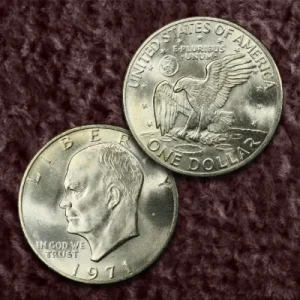
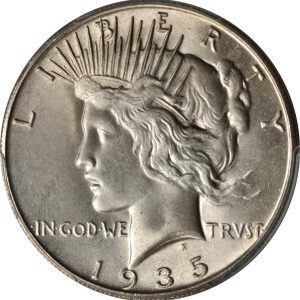
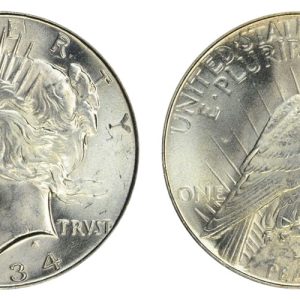
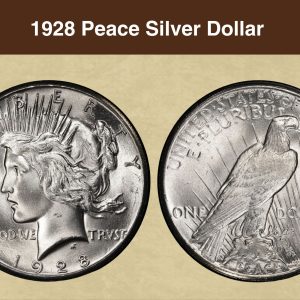
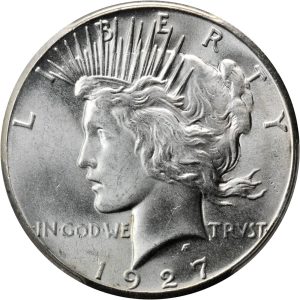
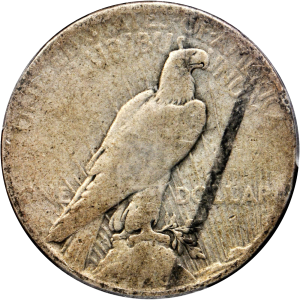
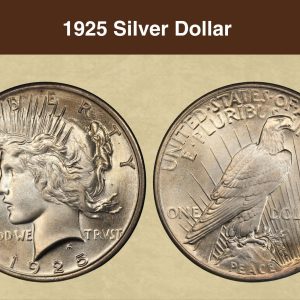
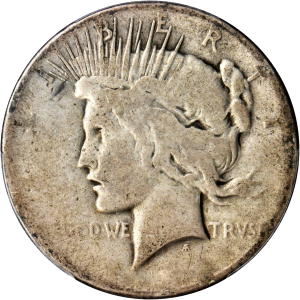
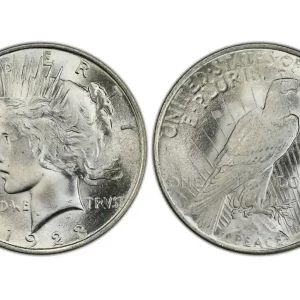
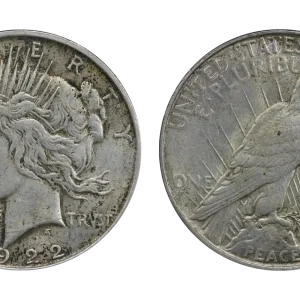
What is the error on the 1889 Morgan Silver Dollar?
The 1889 morgan silver dollars have a list of errors that includes: Off-center. Double or incomplete strike. Clipped planchet.
What makes a 1899 silver dollar rare?
A comparatively low number of Philaldephia Mint 1899 Morgan Silver Dollars were struck and very few were released into circulation at the time of production. The low mintage figure has always appealed to collectors and investors who figured these coins to be worth more.
What are the rare errors on Morgan silver dollars?
Some of the most sought-after VAM varieties include the 1878-P 7/8 Tail Feathers, the 1879-P Reverse of 1878, and the 1887-P Doubled Ear. Clashed Dies : Clashed die errors occur when the obverse and reverse dies strike each other without a planchet in between, leaving impressions from one die on the other.